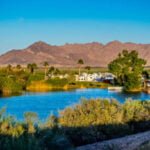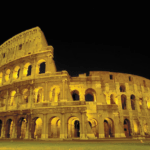When you think of travel destinations, Nigeria might not be the first place that comes to mind but it really should be. You might not expect much when you think about it from a general perspective, but honestly, there are places in Nigeria. It’s one of those countries that surprises you in the best way with lively cities, and natural beauty that’s seriously underrated.
If you’re a Nigerian already, You don’t have to travel out of the country to experience beauty, history, and adventure. Right here in Nigeria, there are amazing places that’ll leave you saying, “Wow, I didn’t know we had this!” They each have a unique story, vibe, and reason people keep coming back.
You’ve got ancient sites, massive waterfalls, peaceful hills, and even places that feel like they came straight out of a movie. If you’re planning to visit Nigeria or you’re just curious Nigerian looking for where to go on your next trip, this list of the top 12 major tourist attractions in Nigeria is a great place to start. Each one has its own charm, and whether you’re into nature, history, or just soaking in a new culture, you’ll find something to love. Let’s get to it!
READ ALSO: 10 Best Places to Live in Lagos: Lekki, Victoria Island and More
Top 12 Major Tourist Attractions in Nigeria
1. Nike Art Gallery, Lekki, Lagos State
Nike Art Gallery in Lekki stands as one of West Africa’s largest art spaces, housed in a five‑story building brimming with over 8,000 artworks from painters, sculptors, and textile artists across Nigeria.

The gallery was founded by Nike Davies‑Okundaye and it features contemporary pieces with traditional crafts, giving you a vivid look at Nigeria’s creative spirit You’ll spot bold batik cloths, intricate adire designs, and wood carvings all under one roof, each telling a story of heritage and innovation.
You can wander in any day; admission is free to the public and check out hands‑on workshops on batik, beadwork, and textile dyeing. If you want more, you can join one of Nike’s guided tours or week‑long retreats that take you to her other centers in Oshogbo, Abuja, and Ogidi, complete with guest‑house stays and studio sessions
There’s also a shop that offers handmade jewelry, bags, and fabrics, so you can take home a piece of Nigeria’s art legacy.
2. John Randle Centre for Yoruba Culture, Lagos Island
The John Randle Centre for Yoruba Culture and History sits in the Onikan district of Lagos Island, occupying the restored JK Randle Memorial Hall and swimming pool built in 1928 by Dr. John K. Randle. The Lagos State Government renovated it in 2023, unveiling a new 1,000 m² exhibition gallery designed by SI.SA Architects that blends traditional Yoruba architecture with modern community spaces.
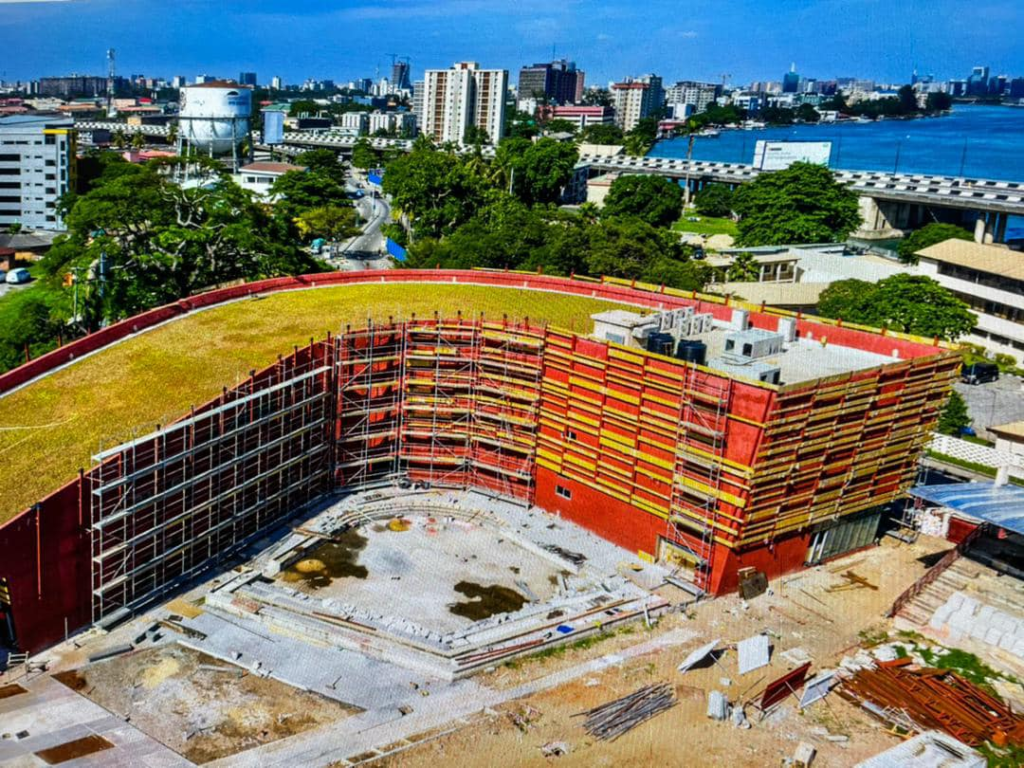
Inside, you’ll explore interactive exhibits on Yoruba myths, deities, and customs, featuring significant loans like the Lander stool from the British Museum and Fela Kuti’s costume. You can swim in the restored pool, dine at on‑site restaurants serving contemporary Yoruba dishes, browse a specialist library, and join seminars—making the Centre a living hub for cultural education and heritage repatriation.
3. National Museum Lagos
The National Museum Lagos is situated at Onikan, Lagos Island, and first opened its doors in 1957 under British archaeologist Kenneth Murray. It holds an estimated 47,000 artifacts made of wood, ivory, metal, and terracotta, with about 300 items on display.
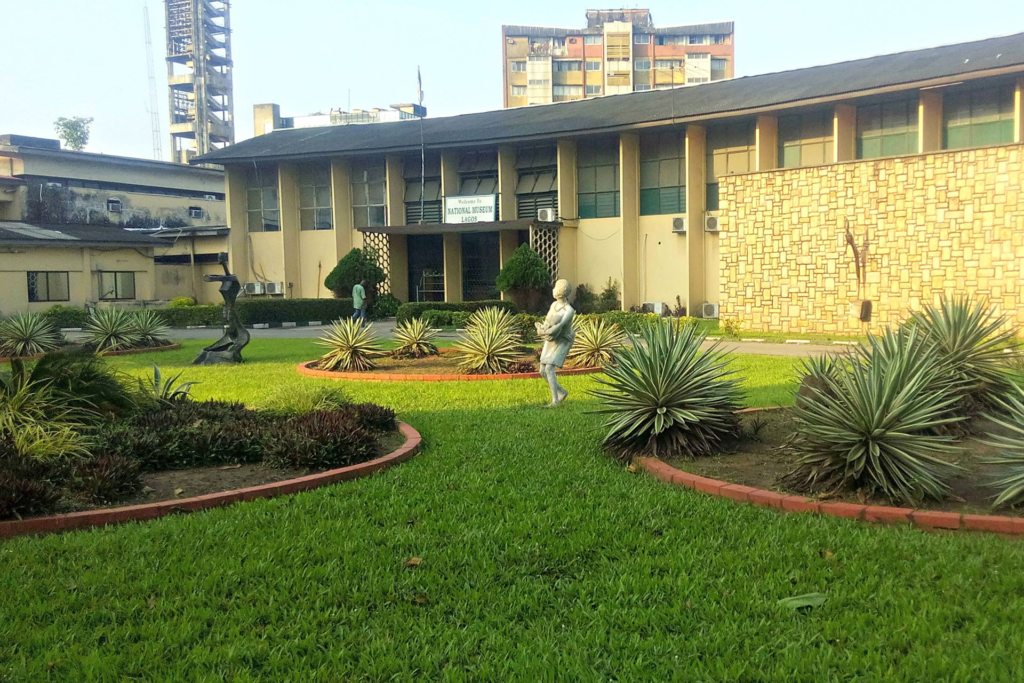
You’ll find Nok terracotta heads, the famed Jemaa Head (c. 900–200 BC), Benin bronzes, traditional masks, and even the bullet‑riddled Mercedes‑Benz of General Murtala Mohammed. Each piece offers a vivid window into Nigeria’s millennia of art, belief systems, and political history.
You can join guided tours led by knowledgeable docents, attend educational workshops on history and art, or browse the gift shop for cultural books and handcrafted souvenirs.
The museum’s layout spans seven themed sections; Fertility & Birth, Initiation, Adult Life, External Influence, Wisdom & Learning, Reincarnation, Death & Burial, plus a Temporary Exhibition Hall and a Nigeria Government gallery; each one guiding you through life cycles and leadership stories
Rotating exhibitions spotlight contemporary artists like Ndidi Dike (2012) and Ngozi Schommers (2019), while digital resources and children’s programs keep the experience fresh and engaging.
4. Yankari National Park, Bauchi State
Yankari Game Reserve, now one of Nigeria’s largest national park, spans about 2,244 km² in south‑central Bauchi State, sitting at roughly 500 m elevation in the West African savanna. It began as a game reserve in 1956 and gained national park status in 1991, preserving rolling grasslands, woodlands, and riverine swamps

The park shelters Nigeria’s biggest elephant population (around 100–150 individuals) and one of West Africa’s few remaining critically endangered lion groups. You’ll also find buffalo, hippos, roan and hartebeest, plus 350+ bird species, making it a top spot for wildlife enthusiasts
You can join guided safari drives at sunrise or sunset, led by rangers who point out elephants, antelopes, baboons, and other creatures moving through the bush. After a game drive, you can cool off at the Wikki Warm Springs, whose crystal‑clear water stays at a steady 31 °C year‑round.
On‑site lodging at Wikki Camp offers studio apartments, luxury suites, and VIP villas, alongside restaurants, a conference hall, and recreational facilities so you can stay close to the action and relax under the African sky.
5. Gashaka‑Gumti National Park, Taraba State
Another major tourist attraction in Nigeria is the Gashaka Gumti national park in taraba state known as the Nigeria’s largest national park, Gashaka‑Gumti. It spans about 6,402 km² across Taraba and Adamawa States, right up to the Cameroon border. The park rises from roughly 457 m in its northern savanna to 2,419 m atop Chappal Waddi, Nigeria’s highest peak.
You’ll trek through montane forests, deep valleys, and rolling grasslands that serve as a critical water catchment for the Benue River. The park shelters over 100 mammal species, including the Nigeria‑Cameroon chimpanzee, forest buffalo, and giant forest hog, plus more than 500 bird species, making it a birdwatcher’s paradise

You can join guided safaris and nature walks to spot elephants, leopards, and roan antelope, or head to the Hippo Pool and the ruins of the German Fort for unique photo ops. You can fish in the Mayo Kam River, camp under the stars at designated sites, or soak in natural hot springs near Gashaka village.
On‑site lodges range from rustic campsites to luxury suites, and trained guides and viewing vehicles ensure you get the most from each adventure. The park also hosts a small museum showcasing local culture and wildlife, making your stay both fun and informative.
READ ALSO: Top 21 Most Celebrated Festivals in Nigeria: Durbar, Eyo, Osun-Osogbo & More
6. Erin‑Ijesha Waterfall (Olumirin Falls), Osun State
Erin‑Ijesha Waterfall, also called Olumirin Falls, perches in Erin‑Ijesha town in Osun State, about 20 km east of Ilesha on the Ilesha–Akure Road. It was discovered in 1140 AD by Akinla, a granddaughter of Oduduwa, the falls cascade down seven distinct levels, each feeding into cool, clear pools below.

The topmost tier sits at the boundary with Ekiti State, in the village of Abake, offering sweeping views over the surrounding forested hills. Locals revere the site as sacred, once holding purification rituals and festivals along its rocky slopes.
Climbing the waterfall gives you both a workout and a reward. You’ll tackle roughly 138 stone steps between the first and second tiers, then scramble up rock faces to higher levels. Many visitors pause at the third tier to rest in its shallow pool before deciding whether to push on; reaching the seventh tier can take about 1.5 hours round‑trip.
Guides from Erin‑Ijesha offer insights into the falls’ legends and help you navigate slippery paths. Best visits come after rainy months, when the flow is strongest and the mist feels refreshing against the midday heat (30–34 °C).
“Don’t forget sturdy shoes, a change of clothes, and your camera—each level frames a new photo opportunity.
READ ALSO: 25 Best Virtual Museum (Free and Paid)
7. Zuma Rock
Zuma Rock rises about 300 m (980 feet) above the surrounding plain, marking the western gateway to Abuja along the Abuja–Kaduna highway. This giant igneous monolith of gabbro and granodiorite shows a natural “face” carved by erosion, with eye‑like hollows and a nose‑shaped ridge. The Gwari people hold Zuma Rock as a protective deity, weaving legends of ancestral spirits and healing powers into its lore. You’ll even spot its silhouette on Nigeria’s ₦100 note, a nod to its status as a national symbol.
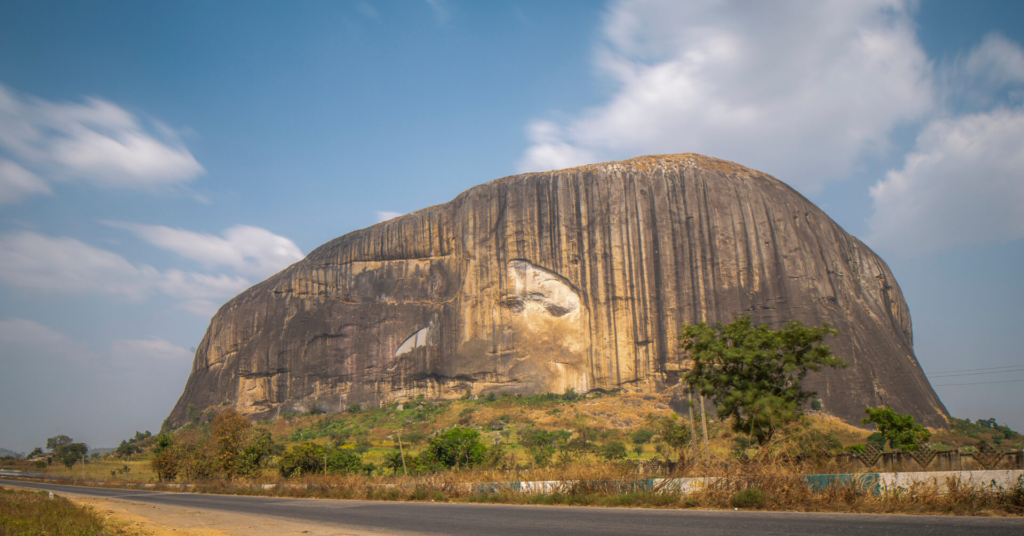
You can reach Zuma Rock in about 45 minutes by car from central Abuja, cruising past acacia‑dotted savanna to Madalla. Local guides lead walking tours around its base, sharing tales of its geology and myths as you hike nearby trails. Early birds bring binoculars to spot African hawk‑eagles and kingfishers among the trees. Photographers set up at sunrise or sunset to catch the rock’s face glowing gold, while vendors at the lot sell snacks and handmade crafts to keep you fueled.
8. Lekki Conservation Centre, Lagos
Lekki Conservation Centre covers about 78 hectares on the Lekki Peninsula, protecting a unique mix of mangrove wetlands, secondary forest, and savanna grassland. It was established in 1990 by the Nigerian Conservation Foundation and funded by Chevron, the centre features Africa’s longest canopy walkway—a 401 m raised path that reaches up to 22.5 m above the forest floor. Alongside mona monkeys, monitor lizards, crocodiles, and a rich array of bird species, the reserve safeguards endangered flora and fauna under the watchful eye of park rangers.

You can stroll the 1.8 km figure‑of‑eight trails, cross waterways via stepping stones, and pause at a 21 m‑high tree house or bird hide overlooking marshlands perfect for photography and wildlife spotting. Guided eco‑tours and night walks reveal nocturnal species, while the on‑site conservation centre, library, and auditorium host educational workshops, lectures, and school programs that deepen your connection to Nigeria’s natural heritage.
READ ALSO: 18 Incredible Places to Go in Lekki
9. Freedom Park
Freedom Park perches on Broad Street, Lagos Island, in the heart of downtown Lagos, on the grounds of the former Her Majesty’s Broad Street Prison. Architect Theo Lawson led its transformation beginning in 1999, restoring colonial‑era walls and cell blocks to preserve Lagos’s colonial heritage and the stories of political activists once held here.

The park opened in October 2010 to mark Nigeria’s 50th independence anniversary and now serves as a National Memorial, Historical Landmark, and Arts & Recreation Centre under the Lagos State Parks and Gardens Agency.
Today, Freedom Park invites locals and visitors to relax amid sprawling lawns, lush gardens, and monuments that honor Nigeria’s journey to independence. You’ll find an open‑air amphitheater that hosts concerts, drama performances, and public debates, alongside a museum displaying prison artifacts and interactive exhibits . Food stalls and cafés dot the grounds, while guided tours and cultural events—like art exhibitions in the Wole Soyinka Art Gallery—bring the space to life year‑round.
10. Badagry Slave Trade Route
You trace the Badagry Slave Trade Route through sites that once anchored one of West Africa’s darkest chapters. At the Badagry Heritage Museum, built in 1863 and converted into a museum in 2002, you examine original chains, yokes, and handcuffs that bound captives for transatlantic voyages.
Steps away, the Mobee Slave Relics Museum, run by descendants of Chief Mobee, displays relics and royal records that reveal how local chiefs both facilitated and resisted the trade. You then enter the Seriki Williams Abass Slave Museum, housed in an 1840s barracoon where Chief Seriki Williams Abass confined captives before shipment. Inside, you find maps of slave routes, photographs, and preserved architectural elements of the barracoon that bring history into sharp relief.

Your journey continues to the First Storey Building, Nigeria’s oldest two‑story structure, completed in 1845, where Bishop Samuel Ajayi Crowther lived and nearby cells held captives in limbo. You pause at the Velekete Slave Market, established in 1502, where market days once saw up to 300 slaves sold to European traders, and at the Spirit Attenuation Well, where captives drank water to erase their pasts before boarding ships.
Te Tour ends at Gberefu Island, the “Point of No Return,” where two leaning poles frame the Atlantic horizon and mark the last steps taken by an estimated 3 million enslaved people between 1518 and 1880. Guided tours weave these sites into a cohesive narrative, as local historians share oral traditions and survivor stories that honor resilience and call you to remember.
READ ALSO: 23 Best Places To Hangout In Ibadan & How Much It Costs
11. Sir Lugard Empire Hill, Niger State
Sir Lugard Empire Hill, also known as Baro Empire Hill, rises about 150 ft above Baro town in Niger State. This gentle hill marks the site where Sir Frederick Lugard installed Nigeria’s first high‑frequency radio station in 1900, linking colonial administrators to London and beyond.
You’ll spot the old transmitter foundations and stone remnants of staff residences and a cemetery for workers who served here. From the summit, you get a clear view of the River Niger about 15 km away, reminding you of the hill’s strategic role in early communications.

You can stroll or hike up well‑worn paths that wind past colonial relics and listen to guides recount how the hill shaped Northern Nigeria’s administration. Photographers love the sunrise light as it bathes the monolith in gold. At the base, local vendors offer refreshments and handcrafted souvenirs, adding a friendly, community feel to your visit. Nearby, you can explore the historic Baro Port and follow old railway tracks that once carried goods for the colony, making your trip both a heritage lesson and a scenic adventure.
12. Ikogosi Warm Springs, Ekiti State
Ikogosi Warm Springs perches in a forested valley of Ekiti State, where two natural springs—one warm, one cold—meet yet flow side by side without blending. The warm spring gushes from a hillside at about 70 °C, cooling to 37 °C at the confluence, while the cold spring stays near 22 °C, each retaining its thermal identity even as they merge.
It was discovered by Rev. John Sydney McGee in the 1950s, the site long held sacred status among locals, who believed the waters had healing powers for ailments like rheumatism and skin diseases. You’ll stand on a wooden deck at the meeting point, watching two streams—one clear and rapid, the other brown‑tinged and gentle—carve parallel paths through lush vegetation.
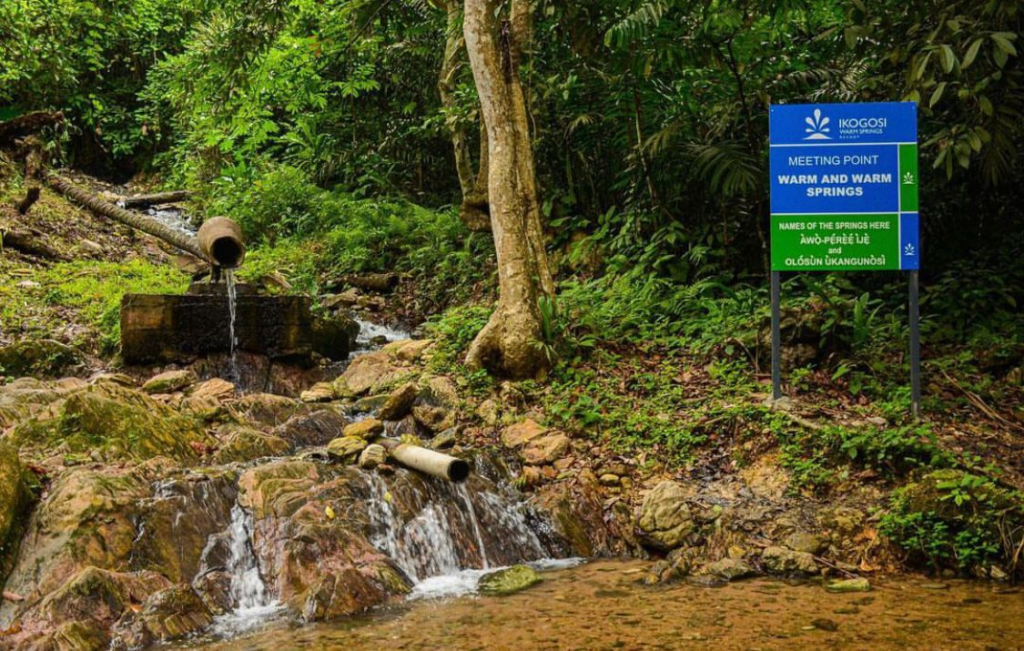
The Ikogosi Warm Springs Resort offers studio cottages, conference halls, and a spa that channels spring waters for therapeutic treatments. Guided nature walks reveal butterflies and over 50 bird species beneath the canopy, while the adjacent Baptist Youth Camp continues McGee’s vision of fellowship and recreation. Accessible by road from Lagos or Abuja, Ikogosi Warm Springs blends geological wonder, cultural history, and relaxation, making it a must‑visit retreat in southwestern Nigeria.
READ ALSO: 23 incredible places to go in Enugu
Conclusion
Nigeria isn’t short of beautiful, exciting places to explore. Whether you love nature, culture, history, or just good vibes, there’s something here for you. From the calm of Erin Ijesha Waterfalls to the deep stories behind places like the Zuma Rock, every spot has a special kind of magic.
You don’t have to be a travel expert to enjoy these places. Just pack light, bring your camera, and get ready to make memories you’ll always talk about. Tourism in Nigeria is growing, and it’s people like you exploring these gems that make it even better. If you haven’t seen any of these 12 attractions yet, maybe it’s time to start planning your next trip!
Drop your favorite Nigerian attraction below or share a hidden gem you think deserves a spot on this list!

